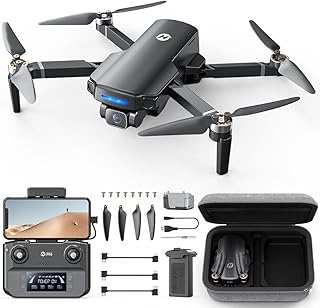Drones: A Rising Star in Disaster Relief Efforts
Drones have emerged as a vital tool in disaster relief operations, revolutionizing how we respond to emergencies. Their versatility, mobility, and advanced capabilities allow them to contribute in numerous ways, accelerating rescue efforts and providing crucial support to those affected.
Here are some key roles drones play in disaster relief:
1. Search and Rescue:
* Rapid Aerial Reconnaissance: Drones can quickly survey large areas, providing aerial images and video footage to identify potential survivors, assess damage, and locate critical infrastructure.
* Thermal Imaging: Equipped with thermal cameras, drones can detect body heat even in darkness or through debris, helping rescuers pinpoint trapped individuals.
* Hazardous Environments: Drones can access dangerous or inaccessible areas, like collapsed buildings or unstable terrain, minimizing risk to human rescuers.
2. Damage Assessment and Monitoring:
* Rapid Situational Awareness: Drones provide real-time updates on the extent of the disaster, allowing authorities to prioritize resources and coordinate response efforts efficiently.
* Structural Integrity Assessment: Drones with high-resolution cameras can assess the stability of buildings and infrastructure, identifying potential dangers and informing rescue operations.
* Environmental Monitoring: Drones can monitor air quality, water contamination, and other environmental hazards, providing crucial data for post-disaster recovery efforts.
3. Communication and Connectivity:
* Establishing Communications Links: Drones can carry communication equipment, providing vital connectivity to isolated areas and facilitating communication between rescue teams and authorities.
* Relaying Information: Drones can act as mobile signal boosters, extending the reach of communication networks and enabling faster information exchange.
4. Logistics and Delivery:
* Rapid Delivery of Supplies: Drones can efficiently deliver essential supplies like food, water, medicine, and medical equipment to remote locations where traditional methods are slow or impossible.
* Medical Evacuation: Drones can transport medical personnel and equipment to areas where access is restricted, facilitating faster and more effective medical response.
5. Psychological Support:
* Providing Comfort and Reassurance: Drones equipped with cameras can be used to provide emotional support to victims trapped in isolated areas, offering a sense of connection and hope.
Challenges and Considerations:
* Regulations and Legal Frameworks: Clear regulations are needed to ensure the safe and responsible use of drones in disaster areas.
* Privacy Concerns: Drone use in disaster relief must be balanced with the need to protect the privacy of victims.
* Technical Limitations: Battery life, weather conditions, and communication range can limit the effectiveness of drones.
The Future of Drones in Disaster Relief:
* Integration with Artificial Intelligence: AI-powered drones can analyze data, identify patterns, and make decisions faster and more accurately, further enhancing their effectiveness.
* Advanced Sensor Technology: Drones equipped with sophisticated sensors will offer even more detailed information about the disaster zone, improving situational awareness and response capabilities.
* Multi-Robot Collaboration: Networks of drones can work together to cover larger areas and perform more complex tasks, increasing efficiency and effectiveness.
Drones are transforming the way we respond to disasters, offering a range of invaluable capabilities to rescue and support those in need. As technology continues to evolve, the role of drones in disaster relief is poised to become even more prominent, shaping the future of emergency response and saving lives.


